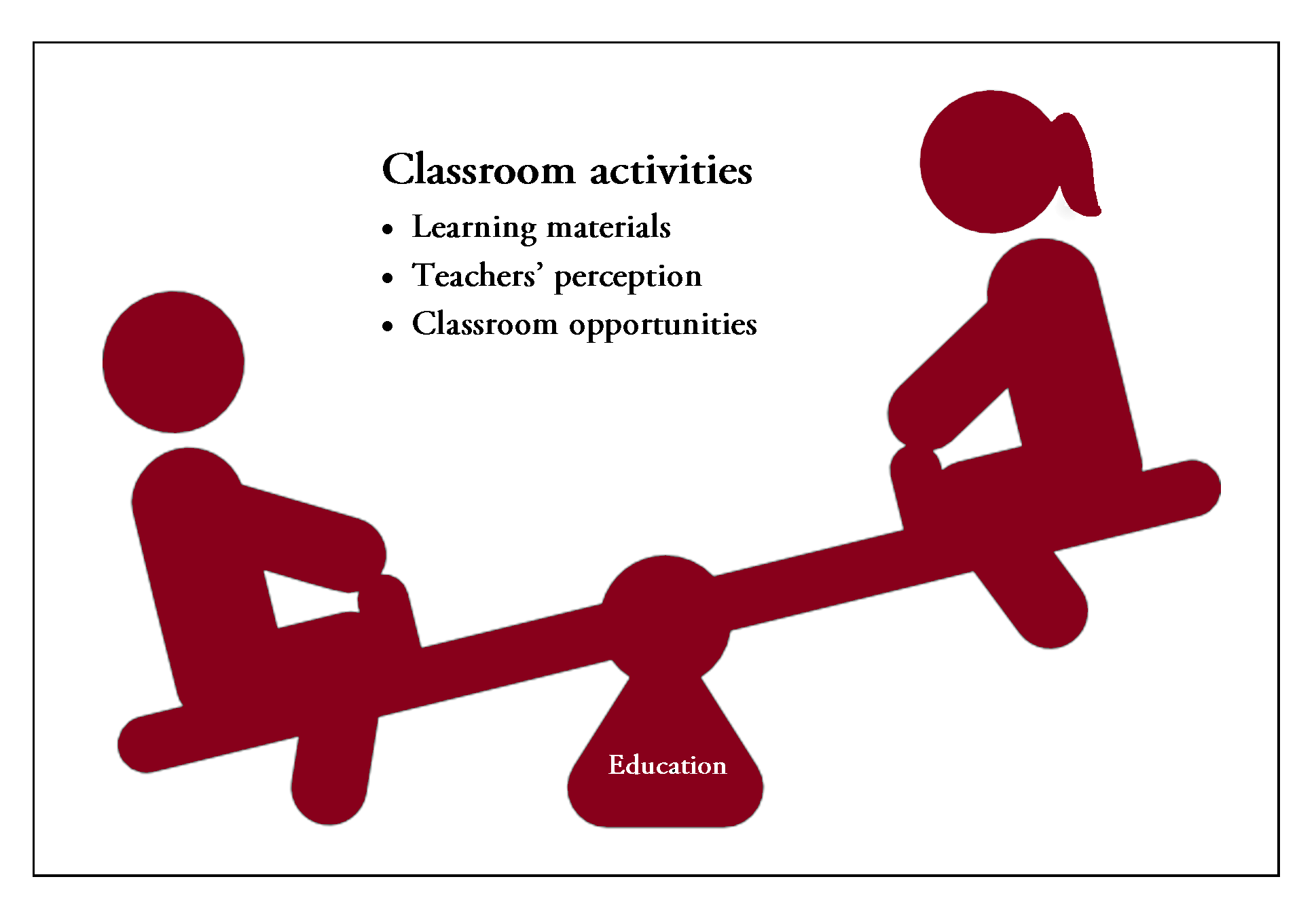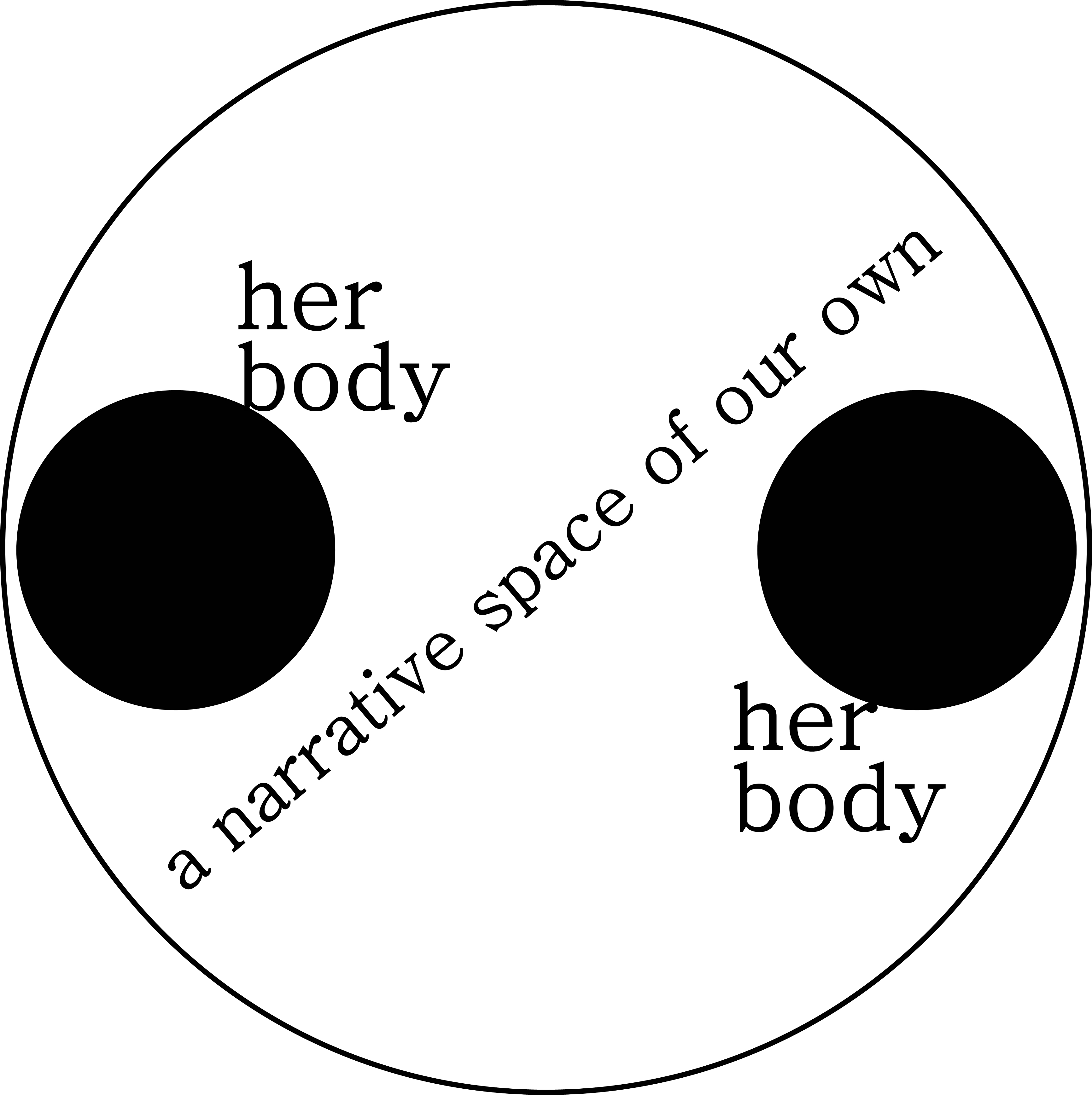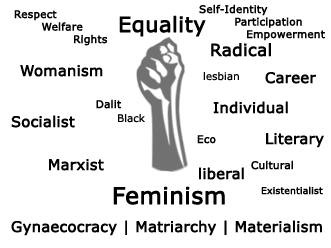Article Title :
Exploring ‘Neutrality’ in the Educational Setting: Gender Imbalances in Some Classroom Practices Among Moroccan EFL Students 
5 (2021)
59-70
Appealing Topics , Classroom practices , EFL students , Gender bias , Male-female interactions , Teaching materials


The aim of the present study is to investigate some biased teaching and learning practices in the classroom context. Special focus geared to the analysis of both male and female classroom interactions along with an examination of teachers’ unconscious bias either in their practices with their students and/or in their choice and use of some teaching materials exploited as topics for class discussion or for evaluation. A three sections’ survey administered to second Baccalaureate students studying EFL in Meknes to serve as a data collection tool for this study. The findings crop up from a quantitative analysis of the data seem to align with prior research in this area substantiating the argument that female language learners are found to be at a great disadvantage. They denied the right to take their learning share of the classroom talk; they not been granted equal time and attention like boys, and they have been excluded far more often from their appealing topics. The paper ends up with a conclusion along with some practical recommendations to help combat this educational mishap. Without any awareness regarding the prevalence and the common overuse of these imbalanced practices, female language learners in particular will continue to be subject to a number of learning barriers, which may hinder them from bringing their potentials into fullness.

The present study focused on investigation of some biased teaching and learning practices in the classroom context.
A three sections’ survey administered to second Baccalaureate students studying EFL in Meknes to serve as a data collection tool for this study.
The findings crop up from a quantitative analysis of the data seem to align with prior research in this area substantiating the argument that female language learners are found to be at a great disadvantage.
They denied the right to take their learning share of the classroom talk; they not been granted equal time and attention like boys, and they have been excluded far more often from their appealing topics.
Alexander, P. A., and Jetton, T. L., 2000. Learning from a text: A multidimensional and developmental perspective. In M. L. Kamil, P. B. Mosenthal, P. D. Pearson, and Barr, R. (Eds.), Handbook of reading research, 3, 285-310. Mahwah, NJ: Lawrence Erlbaum Associates, Inc.
Brouwer, D., 1987. Language, attitudes and sex stereotypes. Dd Brouwer and Dorian de Haan (Eds.). Women’s Language, Socialization and Self-image. Dordrecht, Holland: Foris Publications.
Brunner, C., and Bennett, D., 1997. Technology and gender: Differences in masculine and feminine views. NASSP Bulletin, 81(592), 46-51.
Byrnes, F., 1994. Issues of Gender in Teacher Education. In Sunderland, J. (Ed.) Exploring Gender: Questions and Implications for English Language Education. 163-171. London: Prentice Hall.
Chapman, A., 2000. The difference it has made: The impact of the women’s movement on education. Independent School, 60(1), 20-30.
Clark, C., 2019. Children and young people’s reading in 2017/18: Findings from our annual literacy survey [Research report]. London, UK: National Literacy Trust.
Clark, C., and Foster, A., 2005. Children’s and young people’s reading habits and preferences: The who, what, why, where and when. London, UK: National Literacy Trust.
Coates, J., 1986. Women, Men, and Language. New York: Longman.
Denscombe, M., 2010. The Good Research Guide for Small Scale Research Projects (4th Ed.). Buckingham Open University Press.
Gass, S. andVaronis, E., 1986. Sex differences in non-native speaker interactions. In Day, R. (Ed.) Talking to Learn: Conversation in Second Language Acquisition, 327- 351. Rowley, MA: Newbury House.
Good, T. L., and Brophy, J. E., 1990. Educational psychology: A realistic approach (4th Ed.), Longman/Addison Wesley Longman.
Gurian, M., 2011. Boys and Girls learn differently: A guide for teachers and parents. Jossey-Bass. San Francisco.
Halpern, D. F., 1992. Sex Differences in Cognitive Abilities (2nd Ed.), Lawrence Erlbaum Associates.
Holmes, J., 1989. Stirring up the dust: The importance of sex as variable in the ESL classroom. Paper presented at the Australian Teachers of English to Speakers of Other Languages (ATESOL). 6th Annual Summer School, Sydney, Australia.
Holmes, J., 1994. Improving the lot of female language learners. In Sundrerland, J. (Ed.) Exploring Gender Questions and Implications for English Language Education. Prentice Hall.
Holmes, J., 1995. Women, Men and Politeness. Longman: London.
Lee, V., 1998. Is single-sex secondary schooling a solution to the problem of gender inequity? In Separated by sex: A critical look at single-sex education for girls, ed. American Association of University Women. Washington, DC: American Association of University Women Foundation.
Markert, L. R., 2003. And the beat goes on: Diversity reconsidered. In G. Martin and H. Middleton (Eds). Initiatives in Technology Education: Comparative Perspectives. Griffith University: Technical Foundation of America.
Mouaid, F., 2013. Teacher-student interaction: towards a non-sexist language pedagogy. MATE'S 33rd Annual Conference: ‘Gender Issues in Language Education Language Education for Learners with Special Needs’. 47-57.
Mills, S., 1995. Feminist Stylistics. London: Routledge.
Munro, F., 1987. Female and male participation in small-group interaction in the TESOL classroom. Online Published Term Project. Graduate Diploma in TESOL. Sydney College of Advanced Education.Organization For Economic Cooperation and Development- OECD., 2015. What lies behind gender inequality in education? Paris, PISA in Focus, 49.
Sadiqi, F., 2003. Women, Gender, and Language in Morocco. Boston, MA: Brill.
Sadker, M., and Sadker, D., 1994. Failing at Fairness: How America’s Schools Cheat Girls. New York, NY: Charles Scribner’s Sons.
Shroyer, M., Backe, K., and Powell, J., 1995. Developing a science curriculum that addresses the learning preferences of male and female middle level students. In D. Baker, K. Scantlebury, (Eds.). Science ‘Coeducation’:Viewpoints for Gender, Race and Ethnic Perspectives, (NARAST Monograph 7): National Association for Research in Science Teaching.
Spender, D., 1980. Man Made Language. London, Routledge Kegan Paul.
Spender, D., 1982. Invisible Women: the Schooling Scandal. Writers and Readers Publishing Cooperative.
Sunderland, J., 1994. Introduction. In J. Sunderland (Ed.), Exploring Gender: Questions and Implications for English language education. London: Prentice Hall.
Sunderland, J., 1994. Differential Teacher Treatment-by-Gender in the EFL Classroom: Using Ex-Participants Perspectives. In Sunderland, J. (Ed) Exploring Gender: Questions and Implications for English Language Education 148-153, London, Prentice Hall.
Tannen, D., 1994. Gender and Discourse. New York, NY: Oxford University Press.
UNESCO., 2015. A Guide for Gender Equality in Teacher Education Policy and Practices, Paris.
Weber, K., 2004. Gender inclusive technology education: Interest preferences of male and female students toward activities, content topics, and instructional methods at the middle school and high school levels. Thesis, Illinois State University, Normal, IL.






